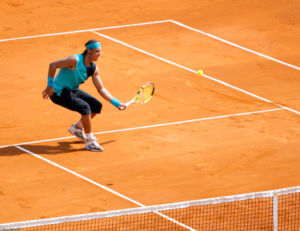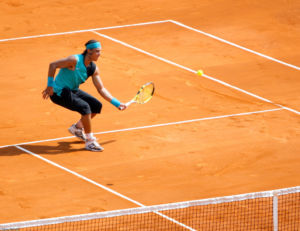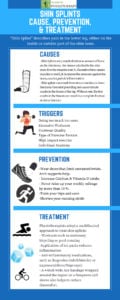Tennis elbow is an injury to the muscles that are involved in the extension of the wrist and fingers. The injury associated with tennis elbow more often than not occurs at the lateral epicondyle. The lateral epicondyle is the juncture located outside the elbow at which these muscles come together, attach and interconnect.

Symptoms of tennis elbow, which are discussed in detail in a moment, that persist for more than six weeks are classified by medical professionals as being sub-acute. If these symptoms last for over three months, the tennis elbow condition is then classified as acute.
As an aside, it is important to understand that tennis elbow is not caused by inflammation. Although inflammation can accompany tennis elbow in some cases, dealing with the inflammation does not resolve the underlying tennis elbow condition.
Symptoms of Tennis Elbow
The most common symptom associated with tennis elbow is pain that occurs when an individual afflicted with the condition attempts to perform an act that involves gripping an object. Oftentimes the associated pain is rather sharp.
Another common symptom of tennis elbow is pain when the wrist or fingers are involved in an extension that involves some level of resistance. Once again, the associated pain can be quite severe in many cases.
The area over the lateral epicondyle at the elbow can also be tender. In more severe cases of tennis elbow, the area can end up being highly sensitive to touch.
Although less common, some individuals with tennis elbow neck stiffness. In some cases, the stiffness may also be accompanied by tenderness in the neck region.
A common misperception is that tennis elbow causes pain and discomfort at the elbow itself. Despite the fact that the elbow is the location of the injury that results in tennis elbow, the symptoms themselves are experienced at other locations.
Causes of Tennis Elbow
A variety of different causes exist for tennis elbow. As the name of the condition indicates, tennis elbow is caused by racquet sports. In addition, tennis elbow is caused by painting, hammering and excessive typing. In these situations, it is more likely to occur if an individual engages in one or another of these activities (or similar ones) for an extended period of time when he or she is not used to them.
Treatment for Tennis Elbow
Physiotherapy is recommended course of treatment for a person suffering from tennis elbow. The treatment process begins with an appointment with a physiotherapist so that an accurate diagnosis of the condition can be made.
Once a diagnosis is made, a physiotherapist maps out an individualized course of treatment. The reality is that the course of physiotherapy -- and complimentary treatments -- do vary from one individual to another. These can include specifically crafted and supervised conditioning, strengthening, range of motion and flexibility exercises.
A person suffering from tennis elbow will experience a swifter resolution of symptoms if he or she seeks out professional physiotherapy early on when signs of the condition first start to appear.


